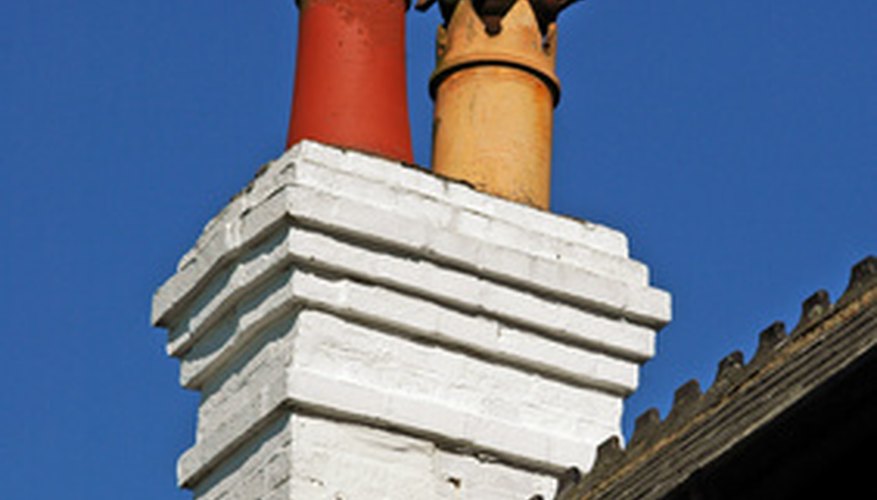The history of chimney pots, from flat slab to ornate extension, is tied to the history of the chimney itself. Chimneys were first developed by the ancient Romans, primarily for use at the Roman calidarium (hot baths) and by the furnarius (baker). Private homes and villas had to make do with central hearths that vented smoke through windows or an aperture in the roof. Modern chimneys first appeared toward the end of the 12th century when fireplaces began to replace central hearths in the great halls of European castles.
Early Chimneys

The evolution from central hearth to peripheral fireplace occurred primarily as a safety measure. Builders of European castles began adding second floors to great halls, making the central hearth unsafe and impractical. Capstones were added to chimneys toward the end of the 12th century and early 13th century to prevent rain from dousing fires.
Rise of the Chimney Pot

Chimneys were refined as the fireplace migrated from castles to private homes. Builders began to realise that they could tent or raise chimney caps to increase updraft and reduce smoke in the home, while still preventing rain from coming down the chimney.
Tudor Period Chimneys

Though the production of separate chimney pots dropped off during the 16th century, the Tudor period and later Gothic Revival is often seen as the golden age of the chimney. English brick-working evolved and resulted in elaborate chimneys that influenced later designs of chimney pots during the Industrial Revolution.
Victorian Chimneys and Decline

The Industrial Revolution led to a rapid proliferation of chimney pots. Large-scale, steam-powered factories, such as that developed by Josiah Wedgwood in Staffordshire, England, allowed for the mass production of high quality pottery. During the Victorian period, a multitude of chimney pots were produced with names such as "The Lady Broughton," "The Little Bishop" and "The Moulded Roll." Chimney pot production again declined in the early 1900s when oil burners became widespread and replaced coal and wood heating sources.
- The Industrial Revolution led to a rapid proliferation of chimney pots.
- During the Victorian period, a multitude of chimney pots were produced with names such as "The Lady Broughton," "The Little Bishop" and "The Moulded Roll."
Modern Revival

Chimney pots have experienced a renaissance since the early 20th century, as interpretations of Tudor and English Revival architecture influenced suburban houses. Chimney pots are in classic and modern designs. An inexpensive way to add character to an existing chimney, some people use chimney pots as elevated planters or accent pieces in home gardens.
